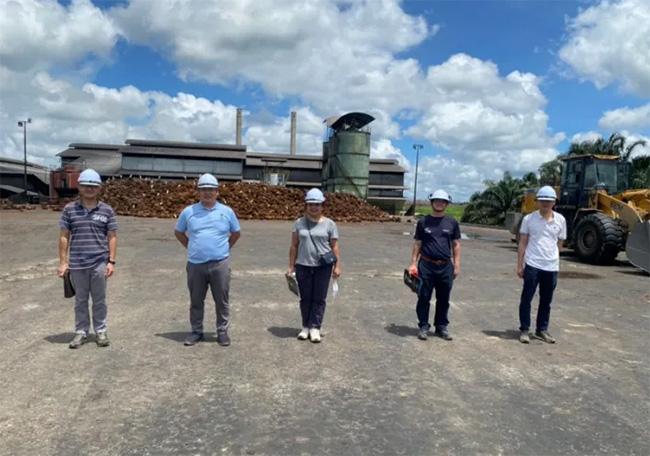Soppoa initiates research project with Curtin Malaysia to produce organic fertilizer from palm oil by-products
Wednesday, 9 March 2022
KUCHING, March 7: Sarawak Oil Palm Plantation Owners Association (Soppoa) is initiating a
research project with Curtin University Malaysia (Curtin Malaysia) to find solutions and improve
current processes in producing organic fertilizer from palm oil by-products.

From left: Moh, Niah Palm Oil Mill general manager Jeffrey Tiong Ik Peng, and Curtin Malaysia lecturers Dr Lim Chye Ing, Dr Law Ming Chiat and Dr Yam Ke San pose for a group photo during a visit to a palm oil mill at Niah, Miri on March 4, 2022.
Soppoa chief executive officer Dr Felix Moh Mee Ho said the project will be a tripartite
collaboration between industry, learning institute and State government, that also complies
with laws, rules and regulations relevant to the operation.
“Soppoa is actively promoting the adoption and implementation of sustainable and good agricultural practice.”
“Integrating circular economy into the production of palm oil is an effective solution to optimise
the usage of by-products and to reduce, reuse and recycle by-products that commonly
underutilised in the linear economy,” he said in a statement today.
Moh revealed the three main by-products from the process of extracting oil from fresh fruit
bunches (FFB) are palm press fibre (PPF), palm kernel shell (PKS), and empty fruit bunches
(EFB).
He said PPF is residue obtained after pressing palm fruits for oil extraction and contains
important amounts of residual palm oil, making it a good combustible material and is
predominantly used as fuel for palm oil mills, where it is burned to produce steam for generating
electricity which saves large amounts of diesel fuel and is a convenient method of disposal.
“PKS is the shell fractions left after the nuts have been extracted from crushing operations and
has long been used as a solid fuel in palm oil mill steam boilers for electricity,” he said.
As for EFB, Moh said it is one of the most significant by-products in terms of quantity (every
metric tonne (mt) of FFB produces approximately 0.22 mt of EFB) which is discarded directly in
the field for mulching purposes and has created enormous challenges to millers to find a cost
effective disposal methods.
He also said the transformation of EFB, through burning or composting processes into organic
fertiliser has been found to be the most suitable way to reduce this raw material before returning
it to fields.
He pointed out that fertiliser accounts for approximately 30 per cent to 35 per cent of total cost
of production for oil palm producers.
The price of nitrogen and phosphorus fertilisers for oil palm, have increased more than 100
per cent over the last six months driven by supply disruptions, strong demand and higher input costs.
“The total planted area with oil palm in Sarawak has reached 1.61 million hectares in 2021. The
amount of fertiliser requires per ha is ranging from 1.3 metric tonnes to 1.7 metric tonnes per
annum.
“If there is an opportunity to substitute 5 per cent to 15 per cent of the existing dosage of
fertiliser with local palm-based organic fertilisers derived from EFB, there will be a significant
savings in terms of cash outflow as well as minimized environmental issues cause by EFB heap,”
he said. — DayakDaily
